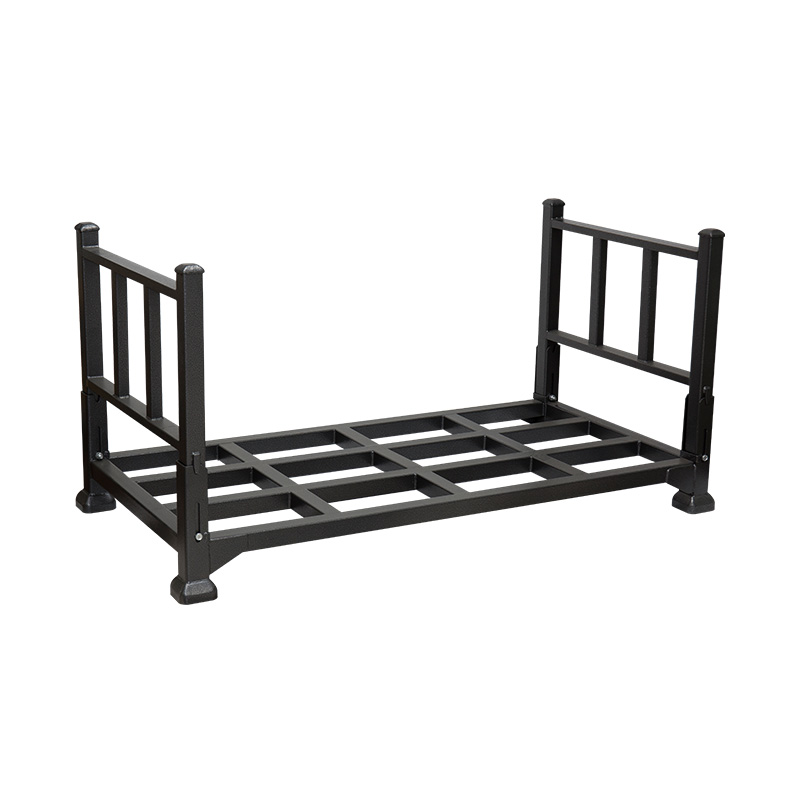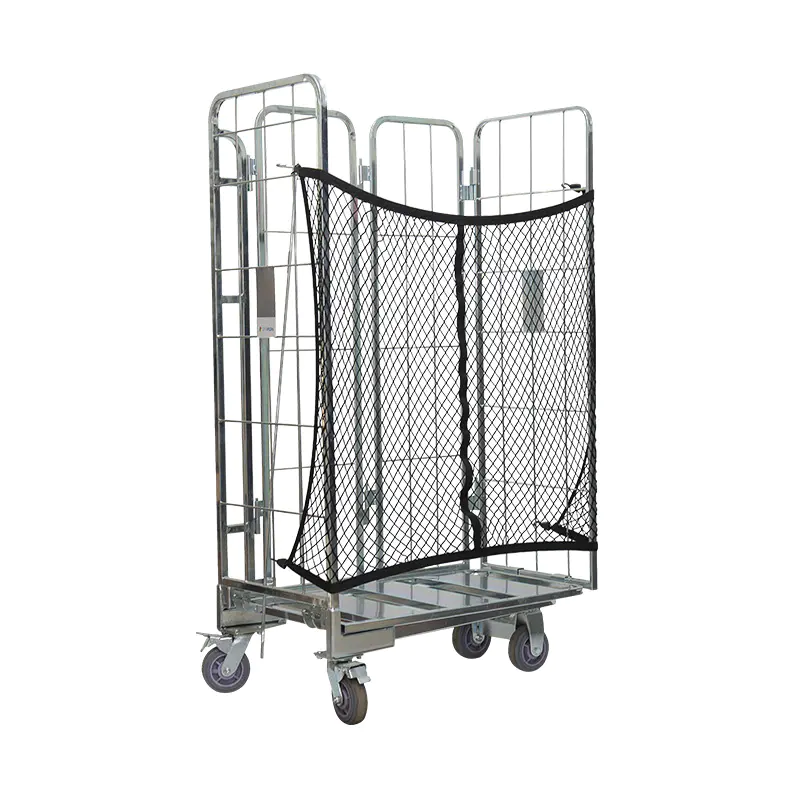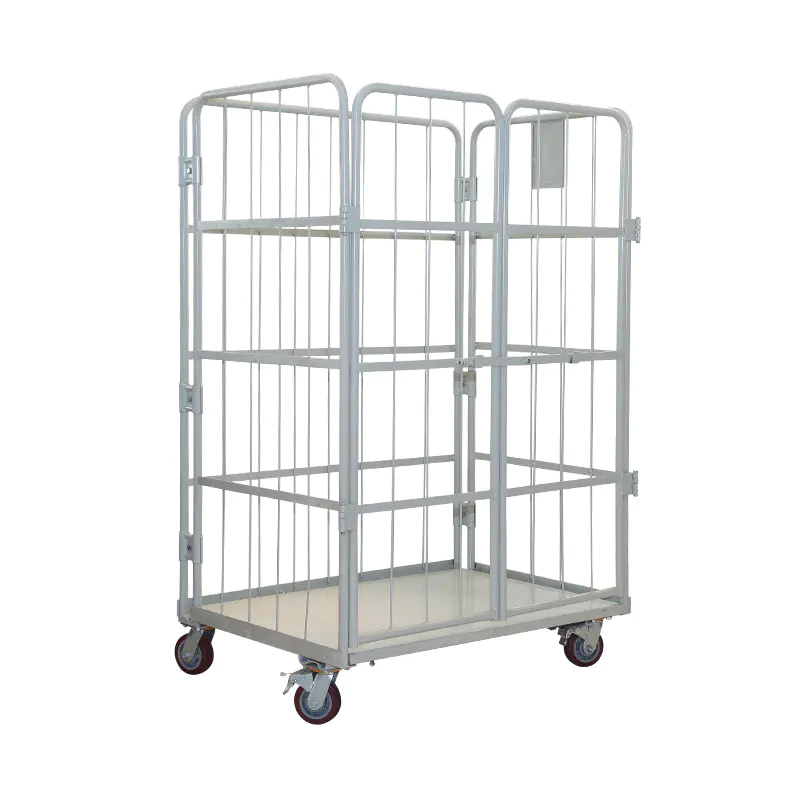Don't hesitate to send a message
Web Menu
Product Search
Exit Menu
Discussion on key technologies and processes for the production of high-speed rail catering trolleys
How can the structural design of high-speed rail catering trolleys meet the requirements of lightweight and strength?
As high-speed rail transportation is booming, high-speed rail catering trolleys, as an important tool for serving passengers, have increasingly stringent performance requirements. Lightweight and high-strength structural design can not only reduce the energy consumption of high-speed rail operation, but also ensure the stability and safety of the trolleys under frequent use.
The choice of materials is the basis for achieving a balance between lightness and strength. Although traditional steel is strong, it is heavy and is not conducive to the goal of lightness. At present, aluminum alloy has become a popular material for high-speed rail catering trolleys due to its advantages of low density and high specific strength. Taking 6061 aluminum alloy as an example, its density is about one-third of that of steel, and after heat treatment, its tensile strength can reach 310MPa, which can meet the strength requirements of daily use of trolleys. In addition, magnesium alloy is also a material with great potential. It is lighter than aluminum alloy and has good shock absorption performance, but it requires additional treatment in terms of corrosion resistance. Carbon fiber composite materials are a high-end choice. Their strength far exceeds that of steel, but their weight is extremely light. They are often used in weight-sensitive key components, such as the frame support structure of trolleys, but their high cost limits their large-scale application.
Structural optimization design further strengthens the combination of lightweight and strength. Using topological optimization technology, computer simulation is used to analyze the force distribution of the trolley under different working conditions, remove redundant materials, and retain key load-bearing parts, which can significantly reduce weight while ensuring strength. For example, the frame of the trolley is designed as a honeycomb or truss structure. The honeycomb structure uses the stability characteristics of hexagons to achieve high compressive strength at a lower weight; the truss structure uses the stability principle of triangles to form a stable frame with slender rods to effectively disperse the force. At the same time, the modular design concept is also widely used, decomposing the trolley into multiple functional modules, and each module is designed according to actual needs. For example, the storage box part adopts a thin-walled design to reduce weight, while the connection between the wheel and the frame is strengthened to ensure the load-bearing capacity.
Connection technology is also a key link in structural design. Traditional welding methods are prone to thermal deformation on materials such as aluminum alloys, affecting structural strength and appearance. Stir friction welding technology solves this problem well. It generates heat through friction to plasticize the material and achieves connection in the solid state. The welded joint has high strength and small deformation, and no filling material is required, which can effectively ensure the integrity of the trolley structure. For materials that are difficult to weld, such as carbon fiber composite materials, high-strength adhesives are used for bonding, combined with mechanical connections, such as rivet fixing, to form a composite connection method, which not only ensures the connection strength, but also avoids damage to material properties.
Through reasonable material selection, structural optimization design and advanced connection technology, high-speed rail catering trolleys can meet the lightweight goal while having sufficient strength to provide reliable guarantee for the efficient operation of high-speed rail catering services. With the continuous advancement of materials science and manufacturing technology, the structural design of high-speed rail catering trolleys will be more perfect in the future to better meet the development needs of the high-speed rail industry.
How does the surface treatment process of high-speed rail catering trolleys ensure corrosion resistance and wear resistance?
High-speed rail catering trolleys are in a relatively complex environment for a long time. They not only have to withstand the friction during use by passengers, but also come into contact with corrosive substances such as food residues and beverages. Therefore, it is very important to ensure the corrosion resistance and wear resistance of the trolley surface. Advanced surface treatment technology is a key means to improve the durability of trolleys and extend their service life.
Anodizing is a common surface treatment process for aluminum alloy trolleys, which can effectively improve their corrosion resistance and wear resistance. During the anodizing process, the aluminum alloy trolley is placed in an electrolyte solution as an anode, and a dense aluminum oxide film is formed on its surface through electrolysis. The thickness of this oxide film is usually 5-20 microns, and the hardness can reach HV300-500, which can significantly enhance the wear resistance of the surface and resist scratches in daily use. At the same time, the aluminum oxide film has good chemical stability and can effectively prevent external corrosive substances from contacting the aluminum alloy matrix to prevent metal corrosion. In order to further improve the corrosion resistance, a sealing treatment can also be performed to seal the micropores of the oxide film to prevent moisture and corrosive media from penetrating.
For some high-end trolleys or parts with higher requirements for surface performance, electroplating technology is used. Electroplating is the process of plating a layer of metal or alloy on the surface of metal or other materials using the principle of electrolysis, such as chrome plating, nickel plating, etc. The chrome plating layer has high hardness, good wear resistance, high surface finish, is not easy to adhere to stains, and is easy to clean; the nickel plating layer has good corrosion resistance and oxidation resistance, and can effectively protect the base metal. The electroplating process can not only improve the performance of the trolley surface, but also achieve a variety of appearance effects by selecting different plating materials and process parameters to meet the aesthetic needs of high-speed rail services.
Chemical coating is also an important way to improve surface performance. A layer of organic or inorganic coating, such as epoxy resin coating, polyurethane coating, etc., is applied to the metal surface by spraying, dipping and other methods. Epoxy resin coating has excellent adhesion, corrosion resistance and chemical stability, and can effectively resist the erosion of corrosive substances such as acids and alkalis; polyurethane coating has good wear resistance and flexibility. Even if the surface of the trolley is slightly bumped or rubbed, the coating is not easy to fall off. In addition, some new coatings also have self-cleaning functions. Nanotechnology is used to make the coating surface super hydrophobic, making it difficult for stains and liquids to adhere and can be removed by gently wiping, greatly reducing the cleaning and maintenance costs of the trolley.
As a cutting-edge field, nano-surface treatment technology brings new possibilities for improving the surface performance of trolleys. By preparing nano-level coatings or structures on the surface, the physical and chemical properties of the surface are changed. For example, nano-composite coatings evenly disperse nanoparticles in the coating material, which can significantly improve the hardness, wear resistance and corrosion resistance of the coating; nano-structured surfaces use special processes to form nano-level concave-convex structures on the surface, which can reduce the surface friction coefficient, improve wear resistance, and also produce a self-cleaning effect similar to lotus leaves.
The rational use of processes such as anodizing, electroplating, chemical coating and nano-surface treatment can comprehensively improve the corrosion resistance and wear resistance of the surface of high-speed rail catering trolleys, enabling the trolleys to maintain good performance and appearance in complex usage environments, providing a solid guarantee for the smooth development of high-speed rail catering services.
How does the shockproof design of high-speed rail catering trolleys adapt to the high-speed rail operating environment?
During the high-speed operation of high-speed rail, vibrations are inevitable. If these vibrations are transmitted to the catering trolleys, they may cause the items in the car to shake or fall, affecting the service quality and passenger experience, and even posing a safety hazard. Therefore, effective shockproof design is the key to the high-speed rail catering trolleys adapting to the high-speed rail operating environment.
Shock-absorbing wheels are an important part of shock-proof design. High-speed rail catering trolleys usually use high-performance rubber or polyurethane wheels. These materials themselves have good elasticity and shock-absorbing properties, and can absorb some of the vibrations from the track. At the same time, in the wheel structure design, a suspension system with springs or dampers is used. The spring can buffer the impact force generated by the vibration through its own elastic deformation; the damper can consume the vibration energy and make the vibration decay quickly. For example, some trolleys use independent suspension wheels, and each wheel is equipped with an independent spring-damping shock-absorbing device. No matter what kind of road conditions cause vibrations, each wheel can respond independently, reducing the impact of vibrations on the trolley as a whole and ensuring the stability of the items in the car.
The overall structural design of the trolley also has an important influence on the shockproof effect. By optimizing the frame structure and increasing the flexibility and elasticity of the structure, effective absorption and dispersion of vibration can be achieved. For example, the frame is connected to the storage box and other parts by flexible connecting parts, which can be rubber gaskets, elastic connectors, etc. When the vibration is transmitted to the trolley, the flexible connecting parts are elastically deformed to absorb the vibration energy and prevent the vibration from being directly transmitted to the items in the car. In addition, the shock-absorbing crossbeam or shock-absorbing bracket is added to the frame design, and its special structural shape and material properties are used to further enhance the shockproof ability of the trolley. The shock-absorbing crossbeam can be designed in a wavy or arc shape, and absorbs energy through its own deformation when it is vibrated; the shock-absorbing bracket can be made of alloy materials with a certain elasticity, which can play a shock-absorbing role while ensuring the structural strength.
The shockproof design of the storage space in the vehicle should not be ignored either. Use shockproof partitions and shock-absorbing pads to separate and protect the storage space. Shockproof partitions are usually made of elastic plastic or rubber materials. The joints between the partitions are designed as movable hinged structures. When the cart vibrates, the partitions can move relative to each other to absorb vibration energy and prevent items from colliding with each other. Shock-absorbing pads are laid on the bottom and sides of the storage box. Their soft material can buffer the vibration impact of the items, while increasing the friction between the items and the storage box to prevent the items from sliding. For some fragile or valuable items, special shockproof storage boxes can also be used. These storage boxes are filled with shock-absorbing materials such as sponges and foams to provide all-round protection for the items.
Through shock-absorbing wheels, overall structural optimization, and shockproof design of the storage space inside the car, the high-speed rail catering trolley can effectively adapt to the vibration environment during the operation of the high-speed rail, ensure the safety and stability of the items inside the car, and improve the quality of high-speed rail catering services and the passenger experience. With the continuous development of technology, the shockproof design of high-speed rail catering trolleys will be more intelligent and efficient in the future, better meeting the development needs of the high-speed rail industry.
-
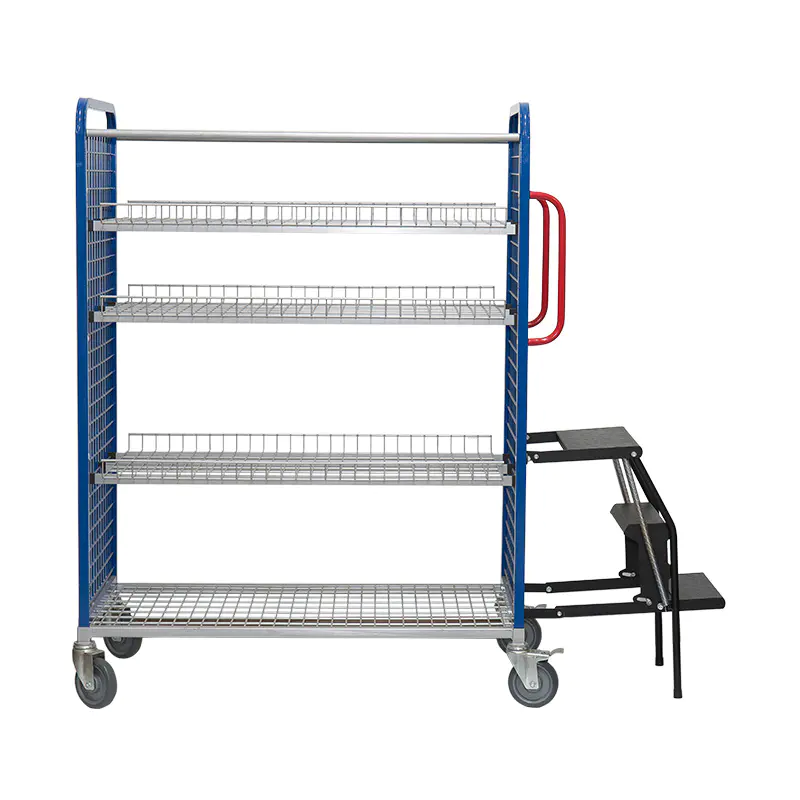
Product specification:This Warehouse wire mesh Multi-Tier Order Picking Trolley adopts a chassis and side panel structur...
See Details -
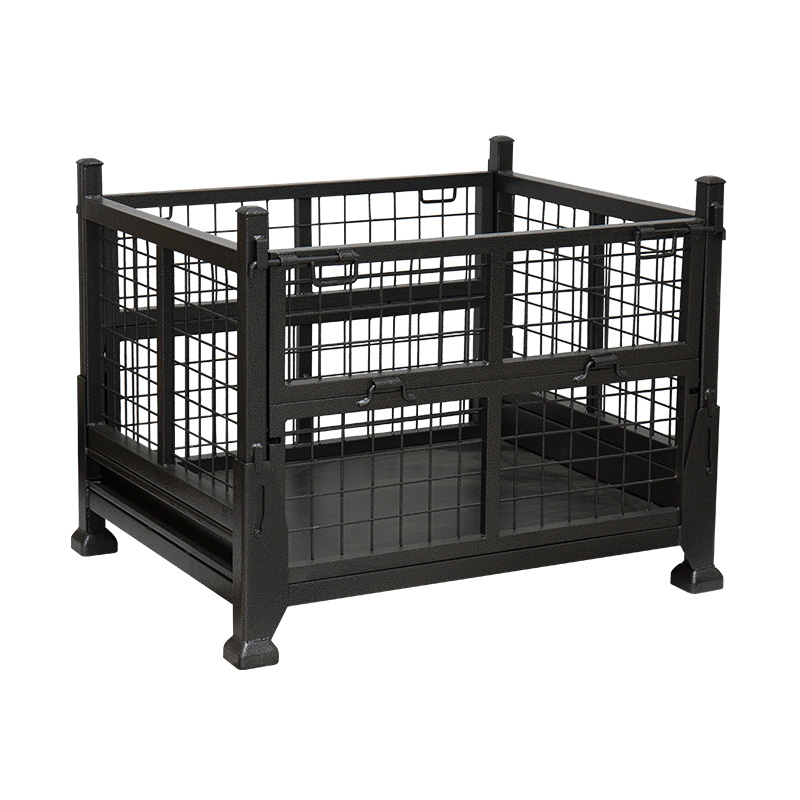
Foldable pallet cages are an important tool in factory logistics. They play an important role in transportation, distrib...
See Details -
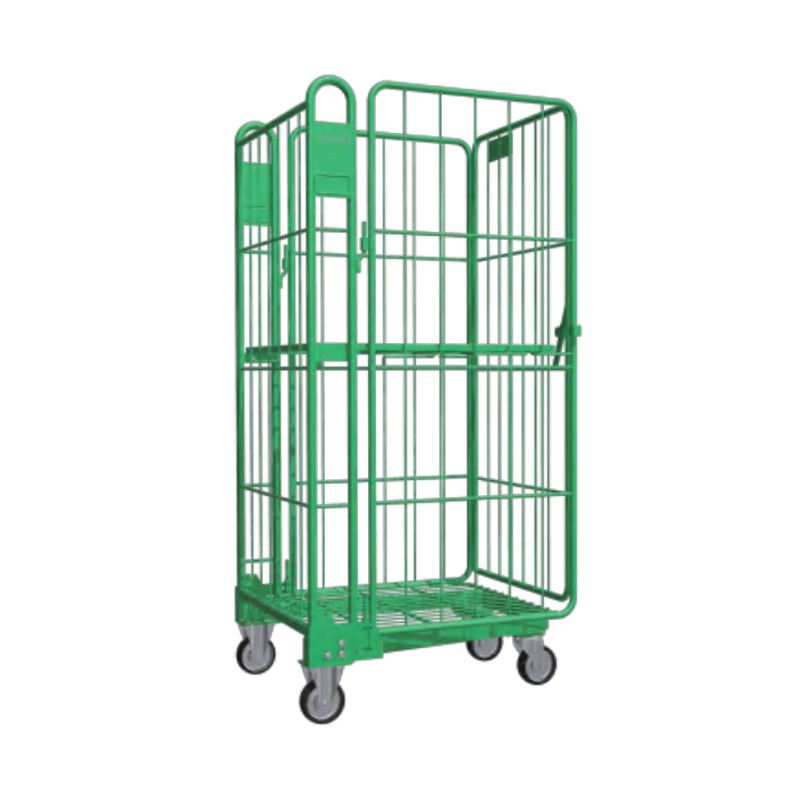
Product specification:The chassis is made of a square tube frame, with a bottom metal sheet tray that can be folded up a...
See Details -
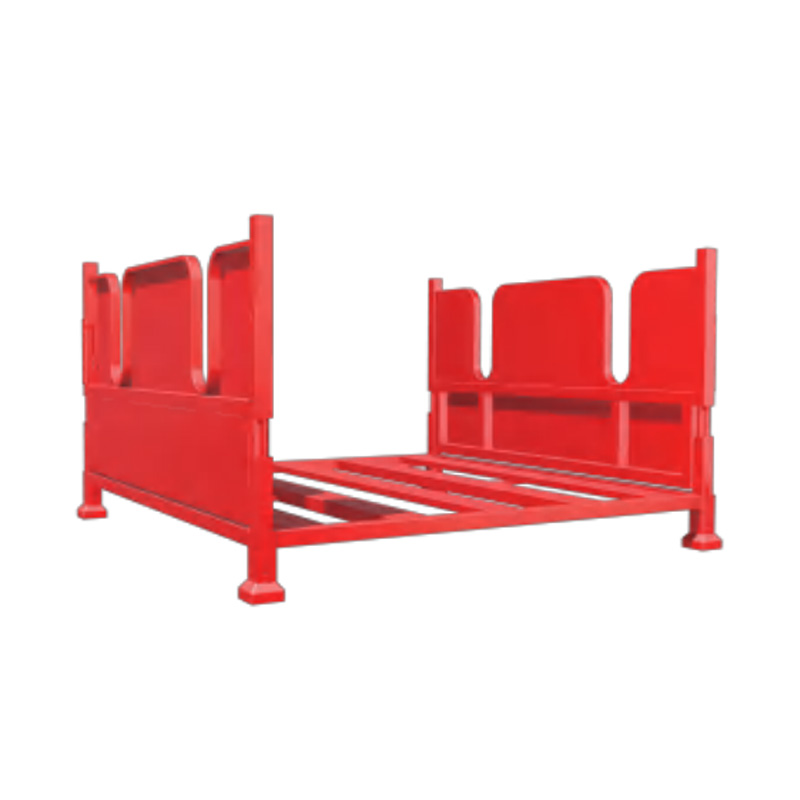
Stacking rack, also known as Qiaogu rack or stacking rackIt is a transportation and storage device derived from pallets ...
See Details -
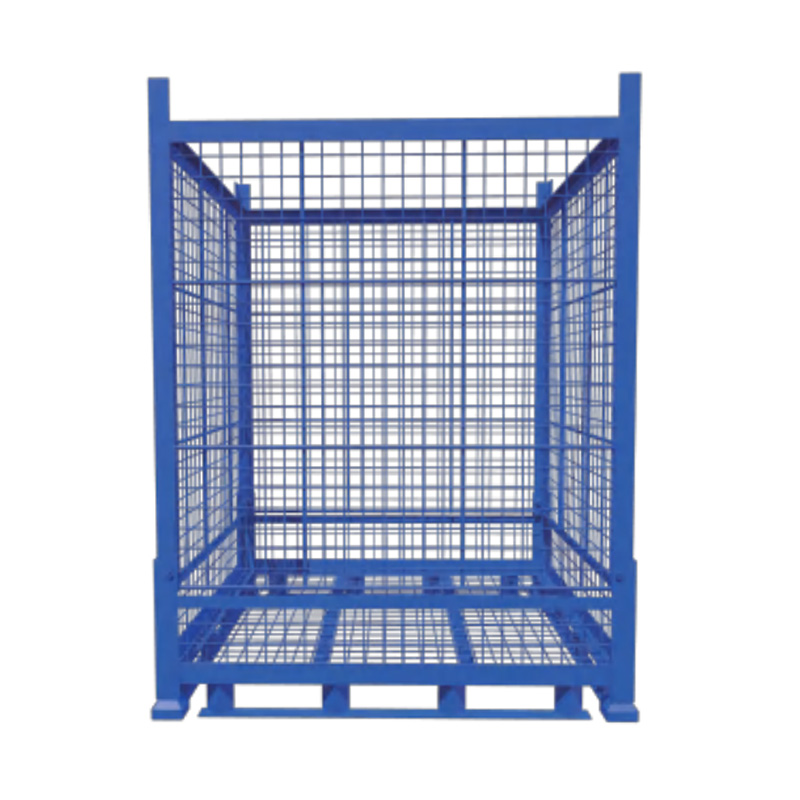
Product specification:Container structure made of L-Type plate frame with 50×50 wire mesh, with base support.Surface tre...
See Details
-
Building B5, No. 138, Weixi Road, Weixi Village, Weitang Town, Xiangcheng District, Suzhou City, China.
-
Tel:
+86-13862140414
+86-13951110334 -
Phone: +86-512-65905480

